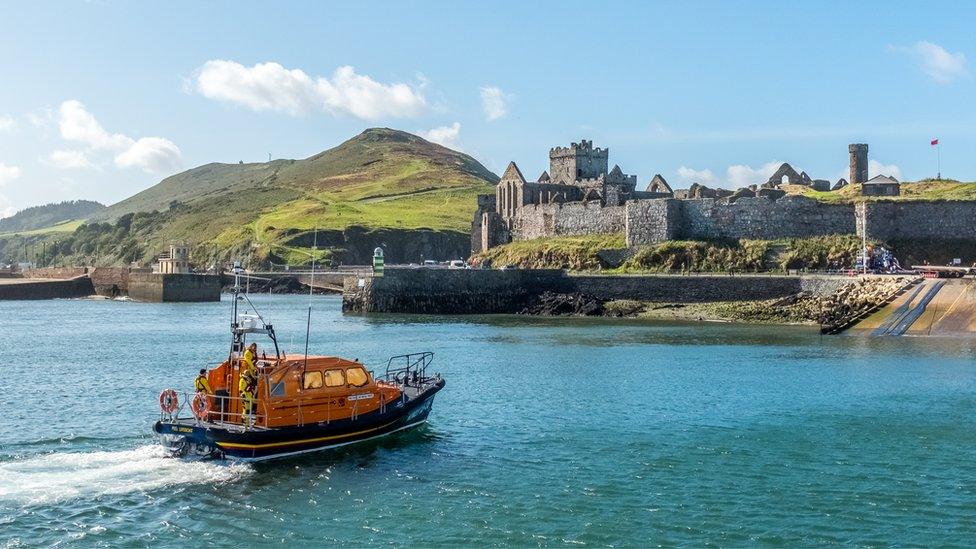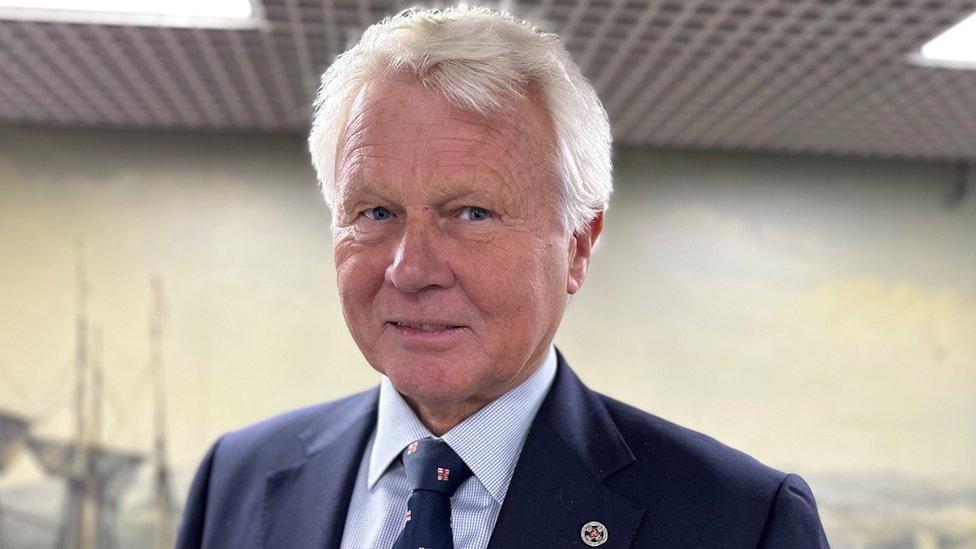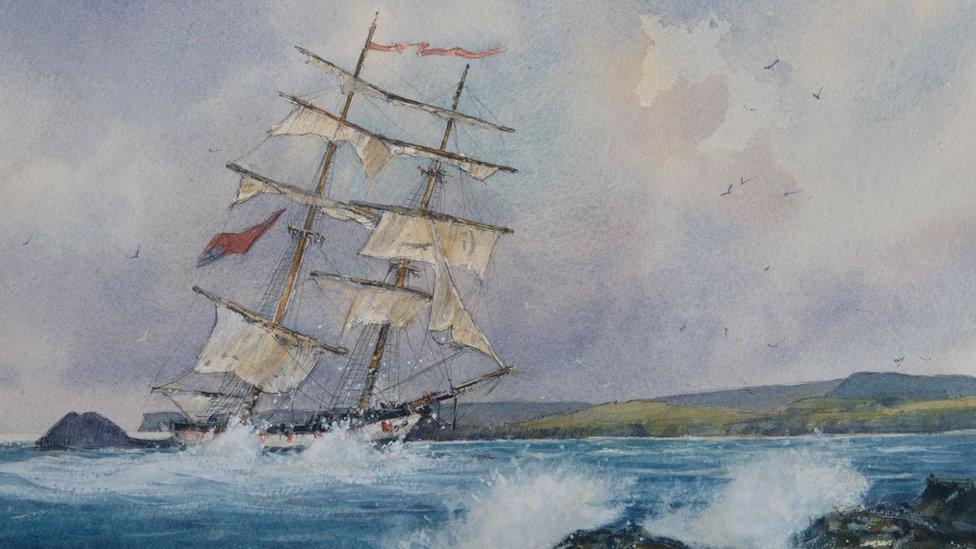Plan to celebrate Isle of Man as birthplace of the RNLI
- Published

It's hoped tourists will explore Manx sites with historic links to the RNLI
A new map and trail highlighting the Isle of Man's role as the birthplace of the RNLI is being developed in a bid to boost tourism.
The attraction is being developed by the charity and the Manx government ahead of the charity's 200th anniversary next year.
The creation of the national lifesaving organisation was first proposed by Manx resident Sir William Hillary in 1823.
Angela Byrne from Visit Isle of Man said it was a "good story to tell".
Sir William Hillary petitioned the monarchy for a national lifeboat service to be established from his home at Fort Anne in the island's capital.
He put forward the proposal following his experience of shipwrecks around the island's coast, including that of HMS Racehorse in 1822.

Anjie Rook from the RNLI said the island had "strong links" to the charity
Anjie Rook from the RNLI said his efforts led to the establishment of the lifesaving service, which will mark its 200th anniversary on 4 March.
She said the new map created with the Visit Isle of Man tourism agency would help to highlight those "strong links" ahead of the milestone.
The design will highlight the island's five lifeboat stations and other sites including Sir William Hillary's grave in Douglas, memorials commemorating lost vessels and the bravery of crews.

Lifeboat volunteer Allen Corlett said he hoped the map would attract visitors
Ms Byrne said the story of the Manx link to the RNLI had not been "told quite as much as it should".
She said the map would allow the tourism sector to attract "new markets" of tourists into the visitor economy as the story of the national lifeboat service was "part of our heritage, our DNA".
RNLI council member and Peel lifeboat volunteer Allen Corlett said the "William Hilary trail" would explore the island's "enormously significant" role in the service.
The island continued to play an important part in lifesaving across the Irish Sea, he added.

Why not follow BBC Isle of Man on Facebook, external and X, external? You can also send story ideas to IsleofMan@bbc.co.uk
- Published24 March 2023

- Published14 December 2022
